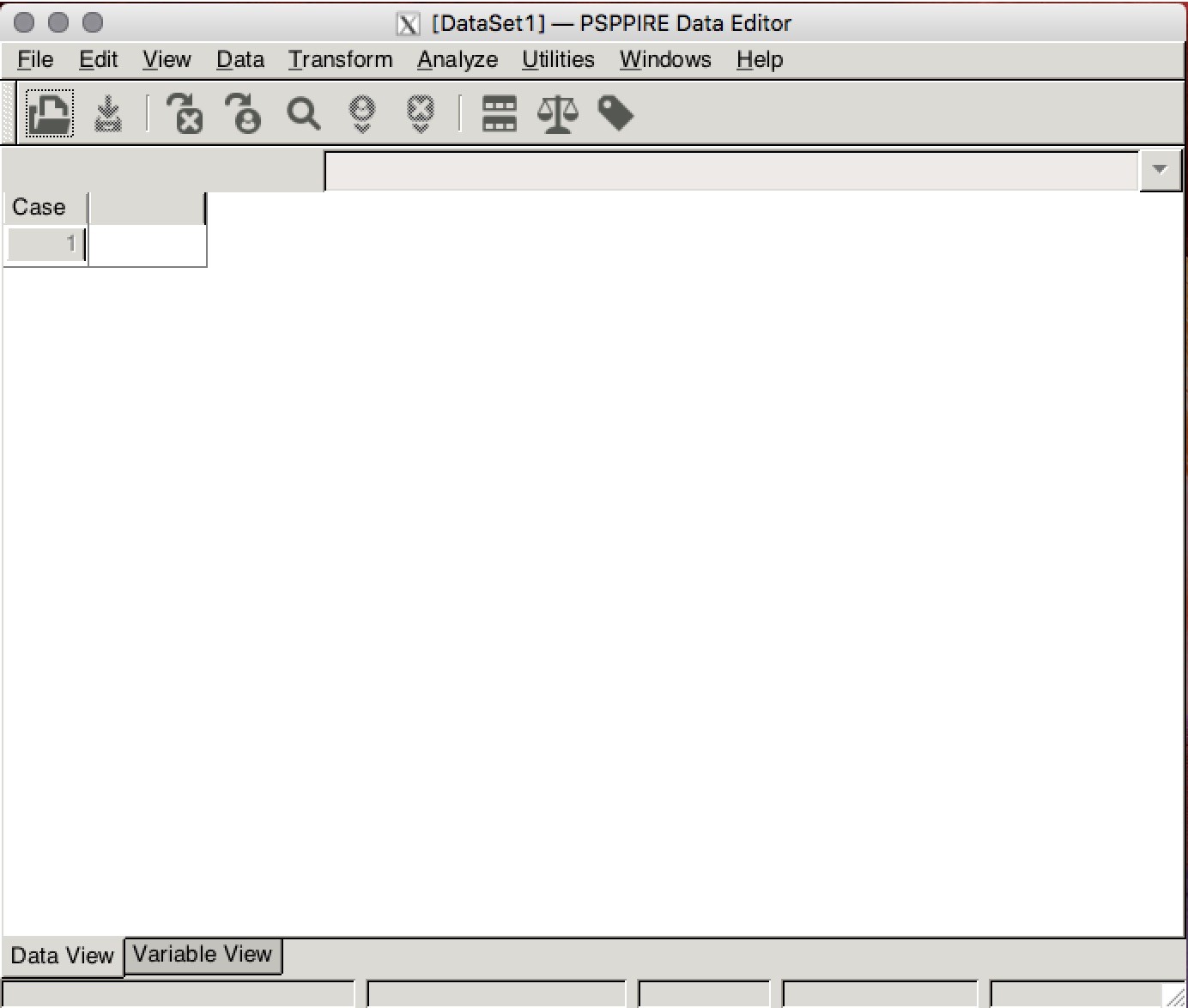

- #Intsalling pspp statistics manuals#
- #Intsalling pspp statistics install#
- #Intsalling pspp statistics software#
And perhaps if it takes off, as R has, we’ll see more advanced features soon. So if you are only using SPSS for basic statistics, or for teaching an intro class, this may be just what you need. That means you can do one-way ANOVA and regression, but not GLM, logisitic regression, factor analysis. No Advanced Models, no Missing Values Analysis, no Complex Surveys. PSPP seems to correspond only to SPSS base. The only downside I can see, though, is with the statement “no additional packages to purchase in order to get ‘advanced’ functions.” That appears to be because there aren’t any advanced functions. You can use PSPP with its graphical interface or the more traditional syntax commands. As it needs programming knowledge, you can try installing an interface called. Its backend is designed to perform its analyses as fast as possible, regardless of the size of the input data. PSPP can perform descriptive statistics, T-tests, linear regression and. PSPP can perform descriptive statistics, T-tests, linear regression and non-parametric tests. There are no additional packages to purchase in order to get “advanced” functions all functionality that PSPP currently supports is in the core package. Neither are there any artificial limits on the number of cases or variables which you can use. The most important of these exceptions are, that there are no “time bombs” your copy of PSPP will not “expire” or deliberately stop working in the future. It is a Free replacement for the proprietary program SPSS, and appears very similar to it with a few exceptions. This package is mainly used for statistical.

This is the description from its website: This article will guide you on installing IBM SPSS Statistics 26. I have not tried it yet, but it does look promising. Sample and Data Collection The respondents of the study were 200 Grade 11 Senior High School students who were enrolled in Probability and Statistics subject during the Second Semester of School Year 2018-2019.
#Intsalling pspp statistics software#
Previous development versions were provided by Jure Čuhalev, but his packages were not updated very frequently.I just heard recently about PSPP, which is a free, open source version of SPSS. PSPP is a free software under the GNU project sponsored by Free Software Foundation. Beta version is development version, which contains all new features, but is not thoroughly tested as stable version.

#Intsalling pspp statistics install#
In Ubuntu you can install PSPP directly from your browser, from Ubuntu Software Center or with the following command: sudo apt-get install psppĪdam Zammit is providing a beta version of PSPP from his PPA PSPP repository at Launchpad. In Ubuntu Quantal repositories there is available PSPP (0.7.9). PSPP is included in repositories of all main Linux distributions, however in some distributions there are only old versions of PSPP available (0.6.x).

Master branch of the PSPP, with newer features, but less testing are available for Ubuntu Linux, Microsoft Windows and Mac OS. To download a product, go to the IBM Passport Advantage Web Site and then: Do one of the following: If you are a returning customer, sign in.
#Intsalling pspp statistics manuals#
However, binary builds are mostly for a stable branch. PDF versions of the installation instructions and manuals are available on the IBM SPSS Statistics 20 Documentation page. Source code and official binary downloads are available on a PSPP GNU-org website.


 0 kommentar(er)
0 kommentar(er)
